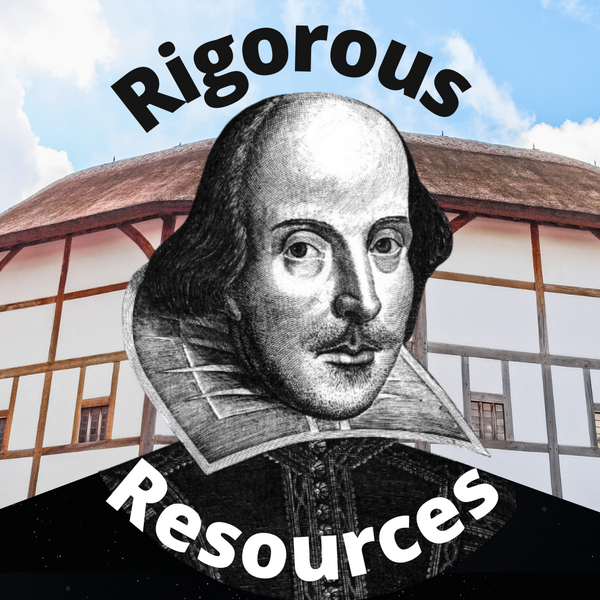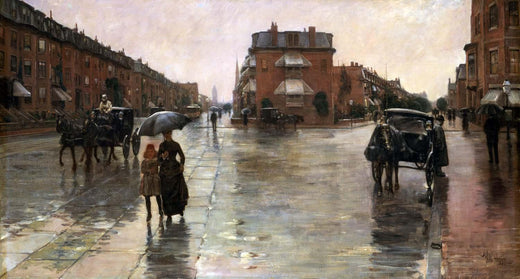Howard Nemerov’s “Because You Asked About the Line Between Prose and Poetry” is an ars poetica: that is, a poem about the art of writing poetry. Because the title invokes a question, one strategy that a teacher might use to open a discussion about the poem is to ask students how the question in the poem’s title gets answered in the body of the poem. What is this poem’s argument about the “line between prose and poetry”? And how does the poem make its argument?
By comparing prose to a “drizzle” that “fell,” Nemerov seems to imply that a work of fiction washes over the reader much like fast-moving water does. A novel or short story sweeps the reader up in its current or flow, allowing the reader to experience the pleasure of being immersed in and carried along by a compelling story. By comparing poetry to “pieces of snow” that “flew,” Nemerov suggests that a poem hovers in front of the reader like a picturesque snowscape. A poem invites the reader to “slow” down, to appreciate the beauty of the language as it drifts down the page, and to reflect upon how the “pieces” or component parts contribute to the text’s construction.

A second way in which the question in Nemerov’s title gets answered in the body of the poem is through the use of imagery. The poem tracks a transition between two starkly different images. The image of a “freezing drizzle” is inhospitable: it's weather that we'd seek shelter from. In contrast, the image of a snowfall is serene and peaceful: it's weather we'd want to witness, to slow down and savor. A snow-filled landscape is the object of aesthetic contemplation in poems ranging from Emily Dickinson’s “It Sifts from Leaden Sieves” to Robert Frost’s “Stopping by Woods on a Snowy Evening.”
A third way in which the question in the poem’s title gets answered in the body of the poem is through the poet’s deft manipulation of diction, syntax, and line breaks. The poem’s fourth line amounts to a virtuosic feat of poetic choreography. Because the s- and l-sounds in “silver” get repeated in “aslant,” the reader’s mouth moves through those words swiftly. But what happens to our reading pace as we get to the second half of the fourth line? The commas at the end of the line literally slow down the pace of the poem, forcing readers to feel the deceleration that accompanies the transformation of rain into snow. In this way, the fourth line not only describes the shift from prose to poetry but enacts that shift through changes in the line’s syllabic and syntactic patterning.
Thus, the question invoked in Nemerov’s title gets answered with surprising thoroughness in the poem’s first stanza. As we have seen, Nemerov uses a wide range of poetic techniques — from metaphor and imagery to sound and syntax — in order to establish the difference between prose and poetry. So why add a second stanza?
In the second stanza, Nemerov complicates the difference between prose and poetry by acknowledging that it may be impossible to define the two genres in an absolute or mutually exclusive manner. Literary scholar Mary Kinzie has observed that Nemerov’s poem is about a tension between an imperceptible change and its more tangible outcome. On Kinzie’s account, the poem focuses on the paradoxical experience of “not being able to describe how something got itself changed from rain into snow, prose into poetry, while watcher and writer know very well what the final state has come to.”[1]
Nemerov’s poem affirms the paradox whereby we find it difficult to define the difference between prose and poetry — “There was a moment that you couldn’t tell” — even as we immediately recognize poetry when we see it: “And then they clearly flew.” The transition is reinforced by the transit from a quatrain whose rhyme scheme of ABAB emphasizes vertical descent — and directs the reader downwards — to a couplet whose rhyming words seem to hover in horizontal suspension: CC.
While my analysis of this poem may have sounded rather prosaic, it is worth noticing that Nemerov makes his point poetically. He doesn’t simply “tell” readers what differentiates poetry from prose; instead, he “shows” it by using literary devices to enact — that is, to demonstrate or dramatize — the difference. One reason why Nemerov’s writing qualifies as poetic is because it forces readers to slow down, invites our attention to linger on the subtleties of image and idea. Our eyes no longer wash over the page like rain, but instead drift slowly and hover languorously, finding pleasure in the rhythmic cadences and sonic harmonies.
How, then, does Nemerov “show” readers what it is that differentiates poetry from prose? The answer, of course, is that Nemerov shows us what poetry is by making strategic use of poetic elements: alliteration, assonance, consonance, rhyme, imagery, metaphor, syntax, meter. When analyzing the form of a poem, the first step is to identify which formal elements are getting used. But the second — and equally important — step is to explain how each element contributes to the poem’s meaning. How does the element contribute to the experience of reading the poem? How does it deepen the poem’s meaning? In short, how does the poem’s form contribute to its content?
[1] Mary Kinzie, “The Judge Is Rue,” Poetry 138:6 (Sep. 1981): 346.
Cover Image: Childe Hassam, Rainy Day, Boston (1885)
Body Image: Alfred Sisley, Snow at Louveciennes (1878)

